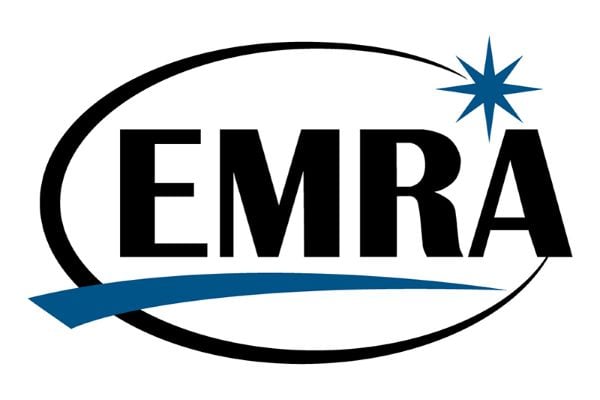How to Be a Superstar: EM Externships
When third year comes to an end, you can't rest long because next is...making your choice of specialty. Sub-internships and externships away from home are both important steps in the process and will give you and opportunity to confirm your interest in emergency medicine and begin (or continue) to network with the emergency medicine community. Here are a few tips that may help you along the way.
Packing Your Bags...
All right, you've chosen your target institution and you are packing your bags. Before you get on the plane, there are a few key things to do.
- Join EMRA and ACEP (one fee membership) at least 2 months before. This provides you with free books that are very useful during your externship and hooks you up with current hot topics, a list of pertinent articles, and can demonstrate to faculty that you have an interest in emergency medicine as a profession. If you are reading this pearl, I assume you've already completed this step.
- Find out what type of coat and dress are acceptable for students in the ED. The clerkship coordinator is usually the best contact for this. Always err on the side of conservatism - short coat and professional dress for every shift. Also, don't ever underestimate the importance of comfortable shoes!
- Bring your own references if possible, and at least one EM review text. You don't know what resources will be available and, although a nuisance, these heavy books will keep you on top of things.
- Bring copies of your CV, personal statement, and picture.
- Pocket references that proved invaluable to me include EMRA’s Top Clinical Problems in Emergency Medicine and the EMRA Antibiotic Guide. During the month, you can add notes to these books and expand their reference potential.
- Do your homework. Especially if you are interested in academic medicine take a few minutes and search the SAEM, EMRA, and ACEP websites. All three have lists of articles providing you with a foundation of knowledge about your specialty.
- Know where you are going. Fly in with enough time to locate the hospital and even the orientation meeting room. Those of us coming from small towns need to be wary of morning commutes.
The Orientation...
The orientation is a good time to ask any of the etiquette questions you previously did not get answered.
- Let the clerkship director know your intentions. Always let them know early on if you are looking to get letters of recommendation and about your interest in interviewing there.
- Set up a midterm appointment. This is a good time to meet and ask how you are doing in the rotation, ask any more questions about the program, and ask the director if there is any information (s)he wants to ask you. Handing them your CV and personal statement during this meeting can really make their job easier.
The Shift...
- Be on time (for you, this means 5 minutes early) always! This demonstrates good work ethic and interest. Whatever you do, don't be late!!!! If you must be late, call the clerkship coordinator as soon as possible and ask if (s)he could let the ED know.
- Define your role. Ask your supervisor what he/she is comfortable with. Should you pick up charts out of the box or wait until they give you charts? Should you go ahead and do all pelvic exams, wet preps, order chest films and blood work, etc? This is extremely important and should never be forgotten. Once you cross the line it is hard to regain your supervisor's trust.
- Admit ignorance. If you are offered a procedure that you aren't extremely competent in, admit it. It only takes one time to overstep those bounds and you will destroy any trust that institution has in you. Usually, residents and attendings are happy to supervise and instruct.
- If the patient looks sick, get your supervising physician. This is not the time to try to look like a superstar and will only result in detriment to you and, most importantly, your patient. Nothing could look worse than the resident coming to check on you and you're trying to take a history on a comatose patient!
- Locate (and use) your references. Quickly reading over 5-Minute Emergency Consult, or another quick resource, before you present your patient can make you look like you're really on top of things. Usually, there will be a collection of references in the ED available to you.
- Make friends with the nursing staff, techs and unit clerks. They know more than you do at this point. Give them respect and try to learn from them. They'll also prove absolutely priceless allies when you can't find equipment, need to find the bathroom, and want to be included on the dinner order.
- Do your own patient's scut. If you want to be a real sub-intern, learn the ropes and track down labs yourself, set up your own pelvic tray, etc. Everything you do to relieve the ancillary staff is a step in the right direction. You'll make friends, become self-sufficient, and provide better care. A good idea is to make sure that your efforts are help and not hindrance.
- Keep track of current treatments. If a current treatment or protocol is not in your pocket reference, write it down. Also, attempt to keep track of attending preference. A post-it note pad in your pocket can help. Attendings eat this up!
- Ask for constructive criticism. At the end of each shift ask your supervising physician what you could have done better and if they have any tips for you. This works!
- If you make a connection with an attending, ask to work with him/her on multiple shifts. This will help them get to know you, and can be valuable when writing letters of recommendation.
The End of your Rotation...
- Ask if your letter writer would like another meeting. This provides them the opportunity to tie up any loose ends.
- Identify other letter writers. It is perfectly fine to have more than one letter writer from each institution. If one of the faculty members can write you a better letter than the director, ask them.
- Send thank-you notes. Everyone has a different style, but a thank you card to each letter writer is thoughtful.
- Keep in touch. If you do another clerkship or something noteworthy after you leave, drop them an email. This establishes your continued interest and can facilitate further career guidance in the future.
Although these suggestions provide only a simple checklist, it should be helpful to clear the water. Best of luck to all of you.
Original Contribution: 11/01
Robyn Hoelle, MSIV
University of Florida
EMRA Medical Student Committee
Edited/Updated: 10/05
Jonethan P. DeLaughter, MSIV
University of North Texas Health Science Center
Texas College of Osteopathic Medicine
EMRA Medical Student Council
Edited/Updated 1/09
Ana Lopez-O’Sullivan, MSIV
David Geffen School of Medicine at UCLA
EMRA MSC, Western Region 3 Representative







